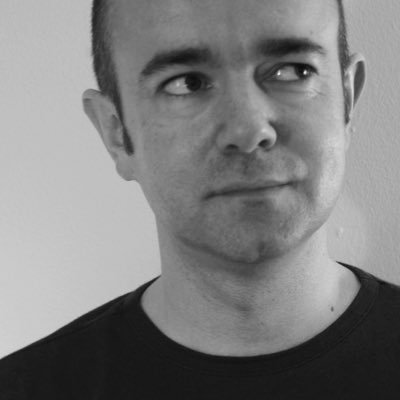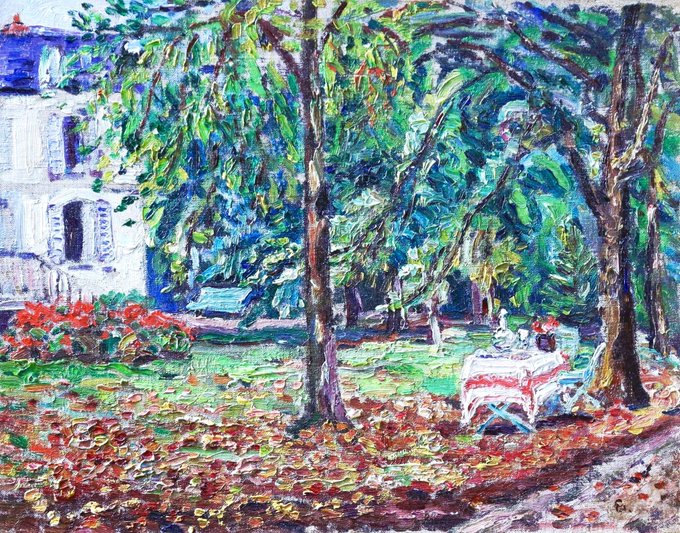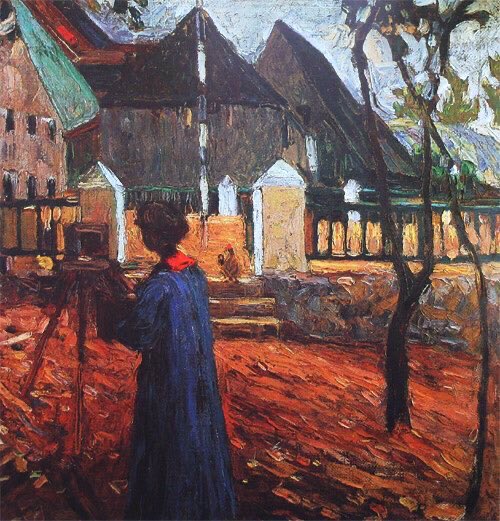Münter gave us a significant number of portraits of her friends & family. These are startlingly modern & exciting. Each utterly beguiling. Portrait of Anna Roslund (1917), In der Erdbeerzeit (1919), Woman in Stockholm (1917) & Meditation (1917)
By 1908 she distilled the ideas of Fauvism into her work. Brighter colours & a more impassioned approach characterised her work. She bought a house & settled in Murnau. Blue Mountain (1908), Von Werefkin (1909), Self (1909) & Winter (1909)
Tunis (1905), Rapallo (1905-6), Le Jardin St Cloud (1906) & Snow at Kochel (1909) track her rapid development in style from almost sculptural dark landscapes to her bright, flattened Expressionist approach.
Münter was born to a well-off Berlin family. In 1898 she spent 2y in the US. From 1901 she studied at a range of schools & came into Kandinsky’s orbit. She was his partner for 10y. Münter by Kandinsky (1903) & early drawings (1902), including a self-portrait
Each of the figures on the ceiling were the result of serious preparations & anatomical Study. Here’s one of the preparatory drawings for Adam as well as studies for the Libyan Sibyl
He also painted the Doni Tondo (1506) & the Manchester Madonna. The Tondo (circular painting) is in the Ufizzi & the unfinished Madonna in the National Gallery in London. Tondo Pitti (1504-5) & Taddei Tondo (1505-6). He loved the Tondo format
The Entombment of Christ (c1500-1) is an incomplete image by the master. The twisted form of Christ & the struggling figures lifting His body are typical of Michelangelo & it can be seen in the National Gallery, London
We know from records he eschewed luxuries, dressed slovenly & took little care over his appearance. He even exhibited a badly broken nose. Here’s a bust of him by Volterra (1564-6). He was deeply religious but also gay. He sublimated his urges in his art.
Fête Champêtre (possibly with or by Titian, 1508-9). Both Titian & Giorgione were associated. Some claimed he was Titian’s master, others that they were fellow students. However Titian’s early work is derived in part from Giorgione. Their closeness is best shown in this work































